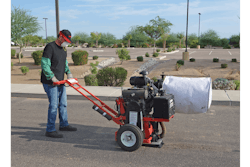PCTC regularly responds to developments in the U.S. and Canada, so we took notice this past June when Canada’s Departments of Environment and Health released a draft of a screening risk assessment of coal tar and coal tar distillates for public review and comment. The draft assessments mostly focused on industrial uses of different crude and refined coal tar substances. Use of these materials in industrial processes means that most exposures are occupational and pose little risk to the public at large. Non-occupational risks considered in the draft assessments focused on possible exposures to refined coal tar-based sealants (RTS). PCTC reviewed the assessments and submitted comments. The comments are available on PCTC’s web site.
The Canadian agencies’ evaluations of possible risks related to RTS exposure focused on three different possible routes of exposure. One was risk from inhaling RTS during application. The conclusion of the assessment of inhalation risk was, "...the few available studies indicate that short-term health effects are limited, localized and generally reversible." The second possible route of exposure to RTS that was evaluated was the risk of getting RTS on skin during application. The conclusion of the assessment of dermal risk was, "Given the infrequent nature of the exposure and the limited duration for which it is expected to occur, the conclusion is that incidental dermal exposure to [RTS] does not constitute a human health concern." And the third possible route of exposure used the questionable data generated by the U.S. Geological Survey (USGS) to evaluate risk that could be associated with polycyclic aromatic hydrocarbons (PAHs) in house dust, tracked into residences from RTS-coated pavements. PCTC has frequently criticized the USGS’s data and questioned the scientific integrity of the process USGS used to collect its data. For the assessment, the USGS data was used to calculate a value called a “Margin of Exposure” or MOE. An MOE value is a ratio of the lowest concentration observed to cause an adverse effect in laboratory animals to an estimated human exposure concentration. MOE values are formally used by the World Health Organization (WHO) and the European Food Safety Authority (EFSA) to evaluate risks. Both the WHO and EFSA use an MOE value of 10,000 as the cut-off to indicate that possible risks are below levels to warrant concern. The U.S. National Library of Medicine has a table on their web site that shows MOE values for different substances people are commonly exposed to. Here are a few examples (higher MOE values mean lower possible risk):
|
MOE |
Substance |
Rodent Carcinogen |
|
(BMDL10) |
of Concern |
|
|
20 |
Wine, 20.8 ml |
ethyl alcohol |
|
100 |
Mushroom (Agaricus bisporus), 5.34 g |
mixture of hydrazines, etc. |
|
100 |
Gasoline station workers (1997) |
MTBE |
|
300 |
Tomato, 88.7 g |
caffeic acid |
|
400 |
Orange juice, 138 g |
d-limonene |
|
500 |
Coffee, 11.6 g |
catechol |
|
600 |
Apple, 32.0 g |
caffeic acid |
|
1,000 |
Celery, 14 g |
caffeic acid |
|
2,000 |
Potato, 54.9 g |
caffeic acid |
|
4,000 |
Cinnamon, 21.9 mg |
coumarin |
|
7,000 |
Pear, 3.7 g |
caffeic acid |
|
8,000 |
Breakfast cereal, 22.7 g |
acrylamide |
|
9,000 |
Potato chips, 5.26 g |
acrylamide |
|
10,000 |
Bacon, 19 g |
diethylnitrosamine |
|
20,000 |
Tap water, 1 liter (1987-92) |
chloroform |
The Canadian government agencies, using USGS estimates of PAHs in residences, calculated an MOE of 15,500; The resulting MOEs for each age group were then weighted according to their time length. The resulting lifetime adjusted MOE is 15,500.
What does this mean in real-world risk terms? The possible health risks the USGS has been concerned about is approximately half way between the risks from eating bacon and drinking treated tap water. Canada's MOE calculation and its additional findings that exposures during application as well as short duration exposures are unlikely to be a threat to public health emphasizes and supports the point PCTC has been making all along.



















